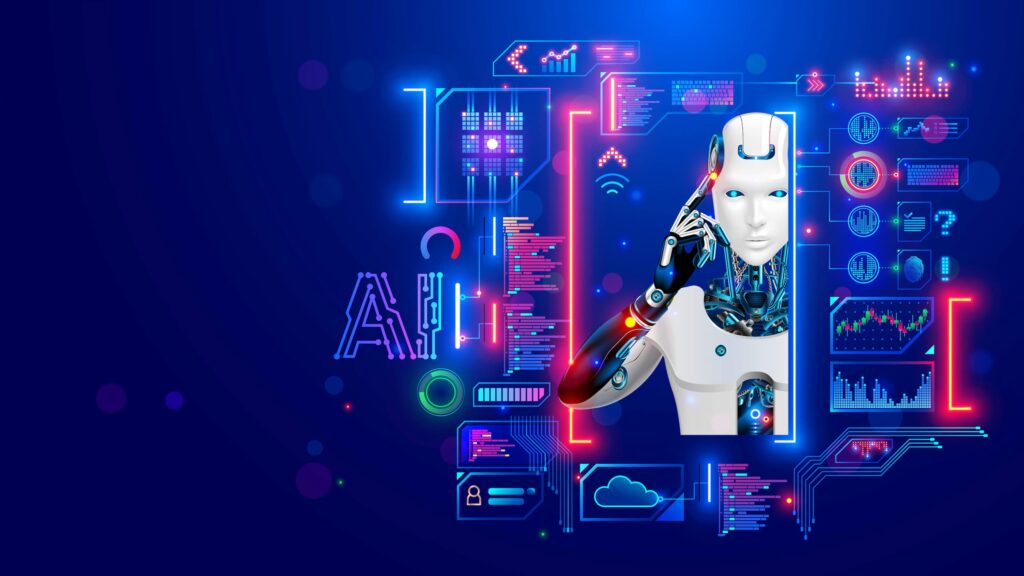
One of the most surprising strengths of AI transformers is their ability to create new things. It can draw completely original images, write never-before-seen stories, and even compose music. But can AI be creative, or is that just the latest fad?
While AI can create original content based on learned and established patterns, it lacks the spontaneity and experience that defines human creativity. So, AI is good at creating generic content, but it’s not genuinely creative because it can’t think outside the box. AI’s creativity is systematic.
Note that there is no one definite answer, as AI’s creativity is a matter of ongoing debate. On the one hand, it can create unique content, but on the other, it’s fundamentally methodical in its approach. Continue reading as I delve into the topic of AI’s creativity in detail.
In What Areas Is AI Good at Being Creative?
Before we can talk about whether AI is good at being creative, we first have to establish what creativity actually means.
Creativity has many definitions, but broadly speaking, it’s the ability to use one’s skills, ideas, and past experiences to create something new.
In that sense, AI can’t experience or think on its own, but it can use our data to achieve the same purpose. It really can create something that didn’t exist before — solutions to unique problems, new content, and editing existing content.
AI is relatively good at being creative in writing, music, art, and video editing. Although it can’t be truly creative like humans can, as it cannot experience and feel, it can create original content using learned patterns. It’s also good at following instructions.
Transformers use relations between words to predict sequences of words, which is what we cal natural language processing (NLP). And thanks to grammar and sentence structures, this isn’t too big of a challenge. In a way, neural networks really do work similarly to a human brain.
However, AI’s approach to creativity is exclusively logical and systematic. If we want, we could increase its randomness to make it less predictable, but the results would likely be chaotic.
With that out of the way, let’s explore some areas AI is good at that are traditionally considered creative.
Writing
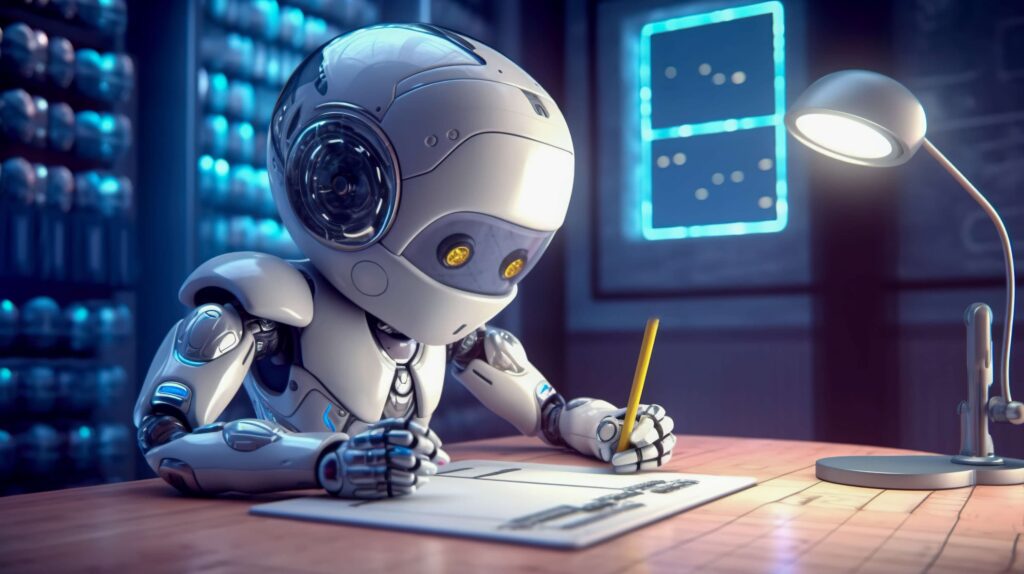
Since transformers are primarily language models, it comes as no surprise that they’re good at writing.
ChatGPT, for instance, is excellent at writing generic stories. It understands common human language patterns, and it was trained on a vast number of data.
It probably knows more about Shakespeare than even the world’s most renowned literature professors. And even if it doesn’t, it’s only a matter of time.
And it’s this data combined with language patterns and story structure that allows ChatGPT to write pretty much anything.
It can write in any tone and style you want it to because it has identified the stylistic cues. That’s why it’s so good at mimicking famous writers’ styles — Wylde, Burns, the Brontë sisters, and everyone in-between.
Of course, it has no problem understanding and using a specific structure, from sonnets and haikus to short stories and novels. In fact, it’s better than humans at strictly-structured poems because it can identify words that rhyme or have an X number of syllables.
And it does all this while strictly following your instructions.
Music
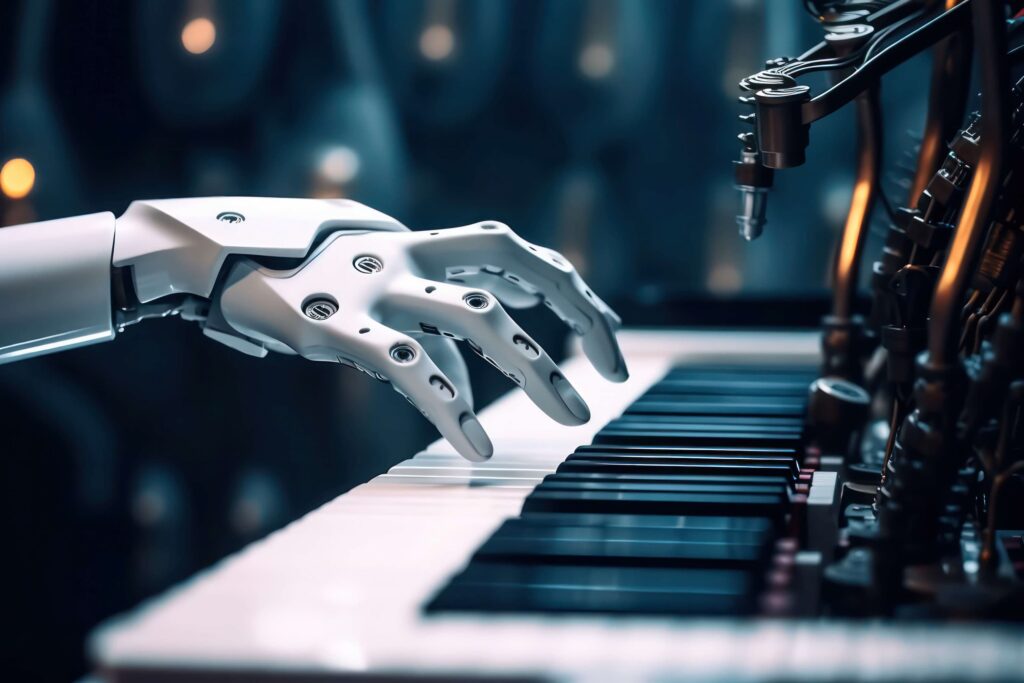
It’s no surprise that AI is decently good at music. After all, it has access to all the music theory it needs. It can easily understand and utilize:
- Song structure. A lot of songs are just intro-verse 1-chorus-verse 2-chorus-bridge-chorus-outro anyway.
- Rhythm
- Time signatures
- Drum patterns
- Scales
- Common chord progressions
That means AI, at least in theory, is a musical genius. Since music generally has an extremely strict structure and rules that should be followed, AI can use that to its advantage.
It can create original music pretty easily. All it has to do is rearrange a few notes in a scale, and boom, you have a different melody. Theoretically, it could create one song in a million different ways.
But it’s not so simple.
While AI is great at recreating an existing song in a different style and knows how to write text, it doesn’t really come together.
To see what I mean, check out MKBHD’s YouTube short to hear what AI-generated music sounds like:
As you can see, it’s amazing at replicating another piece of music in a different style. But it has a lot of difficulties with vocals, and the singing is just mumbling nonsense. We’ll talk more about its drawbacks in music later.
Art
Creating new images is surprisingly similar to writing. AI models like Midjourney and Dall-E learn by adding noise to existing images and then denoising them and compare the results.
This allows them to learn common patterns and colors, allowing AI to create extremely convincing images. You often can’t even tell that it’s not a real drawing or photograph, at least not until you zoom in.
AI is great at mixing and matching styles, objects, backgrounds, and everything in between. You can tell it to create a mural of lime green jeans, which doesn’t exist anywhere, and it’l create something convincing.
It can also paint in any famous artists’ style — Monet, Picasso, Van Gogh, and Hirst are no match for AI’s learning capabilities.
Video Editing
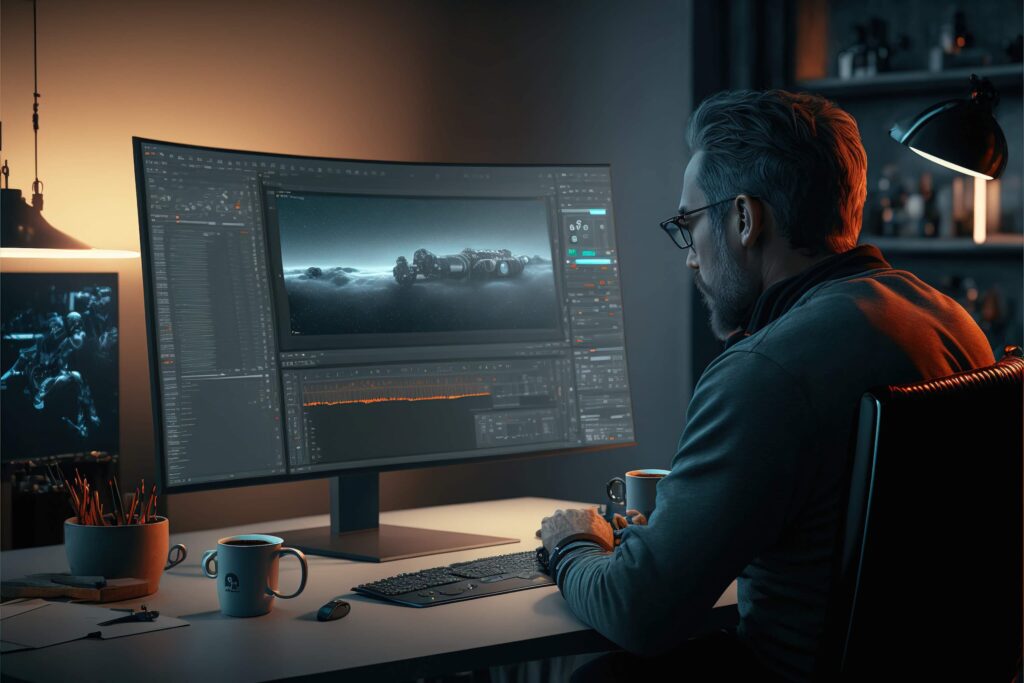
Video editing is shockingly creative. It demands imagination, as the editor has to cut up pieces and stitch them back together in a visually pleasing way. Adding the right effects, transitions, music, etc. are al parts of the creative process.
The final result, combined with camerawork, has a tremendous impact on the quality of the video or movie.
However, a lot of patterns are involved in video editing.
What if we could tell AI, for example, to watch 100 horror movie trailers and then create a trailer for a brand-new movie?
Well, IBM did exactly that. It’s for the movie Morgan, and you can watch it here:
The final result is surprisingly good. The trailer is engaging, invokes feelings, and, most importantly, doesn’t spoil anything. We can say that this trailer is relatively creative, although a bit generic.
To learn more about AI’s creative abilities, read our article “Can AI Program Itself?“. In this article, I’ve discussed how AI can generate code of different programming languages using tools such OpenAI’s Codex and DeepMind’s AlphaCode.
Where Does AI Fail at Being Creative?
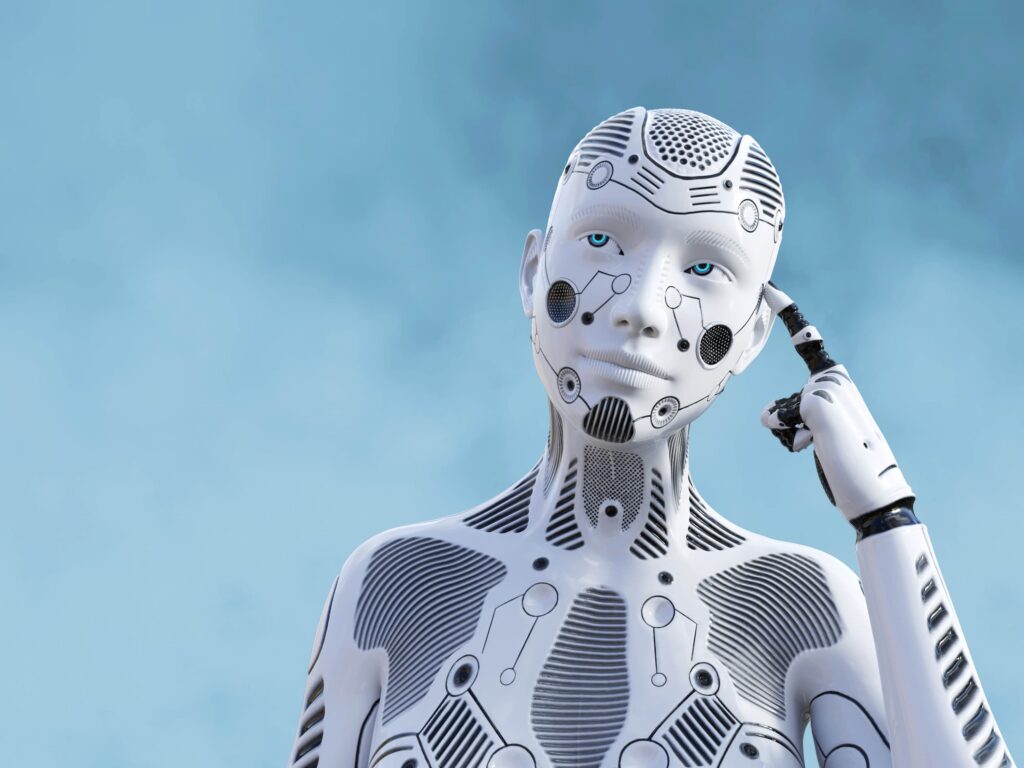
I’ll preface this section by saying that AI is still in its infancy. Writing is full of inaccuracies, images have plenty of artifacts (especially when it comes to hands), and music is hit or miss.
With that out of the way, let’s talk about creativity.
AI’s creativity falls short compared to human’s creativity because it can only mimic what humans have already created. It can’t innovate and come up with completely, truly unique content or images. Moreover, it doesn’t have any emotions and can’t think for itself — it heavily relies on human data.
A lot of creative areas, like the ones I listed above, are supposed to evoke feelings. And since AI can’t feel anything, it doesn’t know the impact its content has.
For instance, we can tell AI to make a scary trailer, but it only knows what scary is from patterns from our trailers. If taken into isolation, it would completely fail.
Conversely, this leads to the “uncanny valley” effect. You might ask it to create a cute cat drawing, but it instead turns out creepy or weird.
As for music, AI has no ears, so it can’t tell that its music is horrible. Sure, the rhythm and the scale are on point, but what if the guitar’s tone sucks?
Most importantly, when it comes to music, we tend to listen to artists we like. AI isn’t capable of creating its own distinct style. At best, it can combine aspects from different artists it’s familiar with.
Ultimately, without humans, there’s no true creativity. There’s no Salvador Dali without the human behind the art.
I like Devan Leos’ explanation for Entrepreneur.com:
“The main problem with AI is that it’s focused on achieving the results you tell it to complete. This means it’s not very good at deviating from its instructions or coming up with unexpected solutions to problems.”
You know that this is true if you’ve tried giving AI a prompt to tell a story. It’s great at using literary devices and staying fully on-topic, but the stories are always incredibly generic and boring.
Is AI Increasingly Trying To Improve Its Creativity?
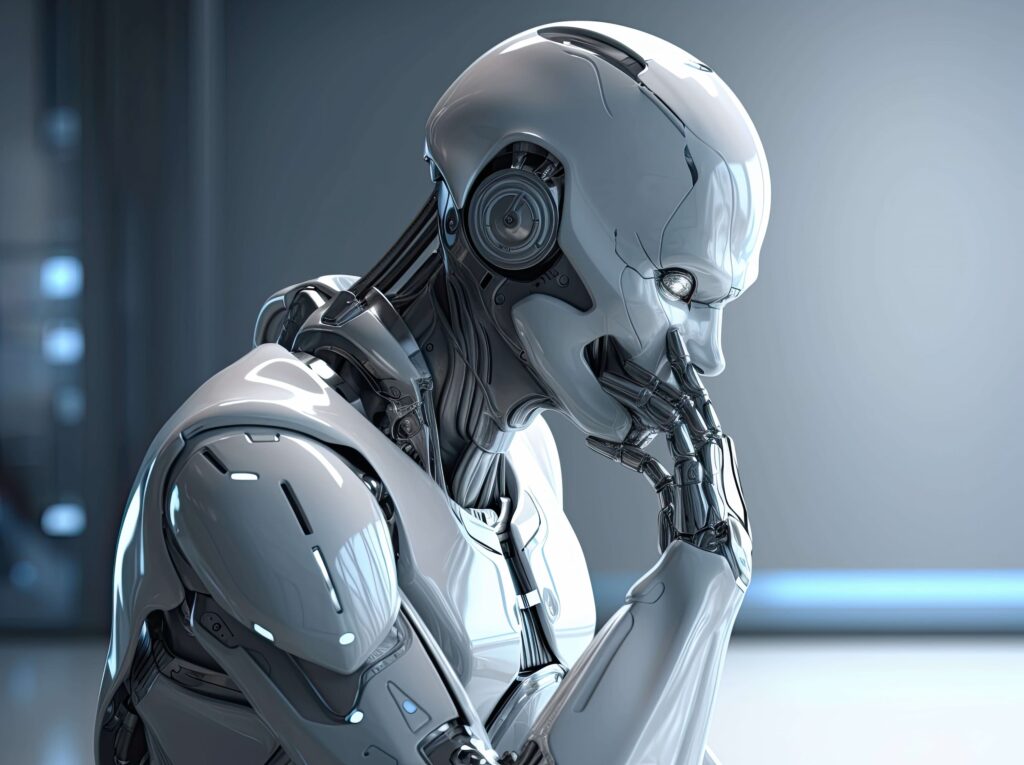
AI companies are constantly working on AI to improve its capabilities, which includes giving it more freedom to be creative. However, as AI approaches creativity methodically and not emotionally, the results are entirely based on probability.
AI is already good at creating generic content. It can create decent images, write solid essays, and make some basic tunes. Still, it’s unlikely that it’ll ever replace great artists.
Moreover, audiences demand an emotional human-to-human connection, which AI can merely simulate. It’s fun to see what AI can generate but, at the end of the day, we all want to see real, genuine creativity.
Final Thoughts
AI is good at creating original content by utilizing its knowledge of existing data and common patterns. It can mix and match stuff however you like it.
However, at the end of the day, it’s just simulating human creativity. Its ability to evoke emotions is more of a byproduct than the intent, as it can’t feel or experience anything. This also means that it’s not capable of having an original thought.
Sources
- CACM: Can AI Demonstrate Creativity?
- New World Encyclopedia: Creativity
- Forbes: The Intersection Of AI And Human Creativity: Can Machines Really Be Creative?
- Forbes: Yes, Artificial Intelligence Has A Creative Side, Sort Of
- Britannica: Creativity
- YouTube: A Deep Look at A.I. Generated Music
- Entrepreneur: Is AI A Risk To Creativity? The Answer Is Not So Simple
- Hugging Face: How do Transformers work?
- Business Insider: IBM’s Watson sorted through over 100 film clips to create an algorithmically perfect movie trailer
Recent Posts
Enhancing E-commerce With Personalized Product Recommendation
Introduction to AI-Driven Personalized Product Recommendations In today's competitive e-commerce landscape, businesses are constantly looking for ways to enhance customer experiences and drive...
In this blog post, I delve into how AI is used in customer analytics and user behavior analysis, uncovering the potential of customer segmentation, personalization, product recommendations, and...
